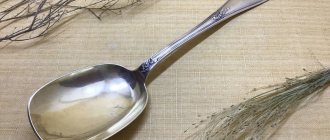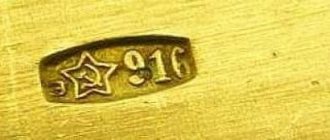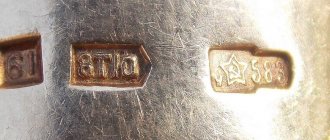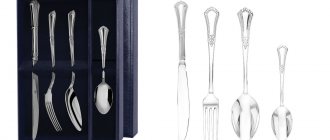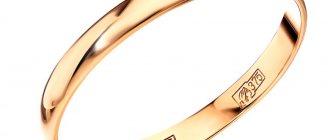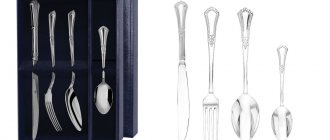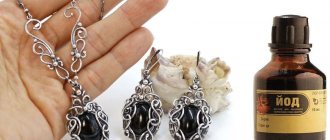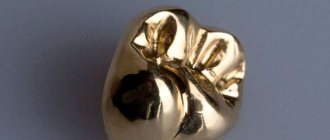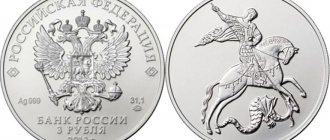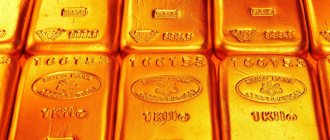Today, science knows more than 80 types of metals. And only eight of them are called noble. Next to gold and the six platinum group metals in this series, silver (argentum) rightfully stands. High ductility, excellent ductility and malleability, immunity to corrosion and oxidation are unique properties that determine its widespread use. Compounds of silver with other metals are especially often used. Thus, 800 sterling silver is often used for the production of cutlery, writing instruments, and decorative items.
Why does 800 silver turn black?
If we talk about the chemical activity of silver, it is worth mentioning that this material is one of the least active of all existing metals. There are many reasons for the loss of color and darkening of jewelry or silver items. One of the most important reasons is the effect of sulfur on the crystal lattice of silver. Sulfur is one of the main substances that can cause oxidation in 800 silver. During the interaction of silver and sulfur, the process of darkening of the metal itself occurs; this occurs due to the fact that during the interaction of these substances, a small film of sulfur sulfate is formed over the entire area of the silver. Sulfur is found in the environment, including the air, although in small proportions. In addition, sulfur is found in human sweat. Moreover, in considerable quantities, which can lead to blackening and oxidation of products that contain 800 silver.
How to restore shine to silver
Today you can find dozens of ways to clean 800 silver products from various types of oxidation. All of them are not complicated and do not require expensive ingredients. Let's look at a few of them.
One of the most popular methods of cleaning 800 silver items is to use a solution of plain water and ammonia. To do this, you will need a liter of plain cold water, dilute a few tablespoons of alcohol, and then stir. Your product should be placed in it for 15 minutes, no more. After this procedure, you should rinse the product under running cool water and wipe dry.
For the second method you will also need a solution, although now it consists of soda, salt and water. The cleaning principle is approximately the same, but the product does not need to be left in place for more than 10 minutes. If you use these treatments several times a month, your product will never lose its original shine.
Types of silver hallmarks in Russia
Now the most common alloys are 925 and 875 silver. Most often, silver hallmarks have the shape of an oval with cut off sides, an image of a woman’s head in a kokoshnik, turned to the right. In the lower left corner there is a letter that indicates the place where the product was tested; the numbers on the left indicate the alloy sample. Products may also be branded as follows:
- The main hallmarks are the marks called the letters “A”, “B”, “C”, “G”. Their presence in the product is sufficient. The stamp of the letter “A” looks like the head of a woman in a kokoshnik in a circle, outside of which there may be a sample. The letter “B” stamp has the standard appearance described above. “B” and “G” have a similar appearance to that corresponding to “A” and “B”, except that instead of a woman in a kokoshnik, they depict a five-pointed star with a hammer and sickle inside. Products made of precious metals were branded with such imprints in the USSR. They are not used now.
- Additional hallmarks include hallmarks of the letters “D”, “E”, “Zh”, “Z”. They have no independent meaning. This mark in itself is not enough to determine the quality of the product; the main one should be next to it. Nowadays only the letter “D” stamp is used. It looks like a rectangle with rounded ends, inside of which there is a sample designation. The letter “E” was used to mark products that did not correspond to the declared standard. The remaining two have been used previously.
- Another form of the main stamp, the letter “B,” denotes products intended for shipment abroad. They differ from the main one in that instead of a woman in a kokoshnik, they depict a ship. This test is enough.
- Products can also be branded with combined hallmarks. They combine the main mark with the “name”, or the mark of the master, which indicates, in addition to the region where the product was tested, the manufacturer himself.
- For the 50th anniversary of the October Revolution, a temporary stamp was introduced, dedicated to the anniversary in honor of the space explorers; it was valid for two months of 1967.
- Until 1994, for church items it was allowed to use only the stamp of the letter “D”, without the main one.
- Until 1997, medals and coins were marked with letters indicating the precious metal in accordance with chemical designations, with a hallmark next to it. If products do not have artistic value, they are now branded in accordance with generally accepted standards.
- There are several sampling systems. Nowadays metric is used, but until the twentieth century, spool-type was used.
The mark can be placed in several different ways. Most often it is applied mechanically. But if the product is thin or especially expensive, a laser type of application can be used. Since items made from precious metals are subject to abrasion, you must be especially careful with laser-applied jewelry. If they are subjected to constant mechanical stress, the sample may be erased.
Ways to install a fake
You can reliably distinguish a fake from a genuine precious metal in jewelry workshops, purchase shops, and pawn shops. If there is no opportunity to contact professionals, you should use the following recommendations:
- First of all, you need to carefully examine the sample on the product. Lack of markings may indicate a fake.
- Try dropping iodine onto an inconspicuous part of the object. Genuine precious metal will darken upon contact with the substance.
- The new product must not have scuffs, scratches or other defects. This appearance is only acceptable for antique items.
- You can try to gently scratch the surface with a needle. If a different color of metal appears at the site of the scratch, this is a fake.
Causes of silver blackening
The most common cause of blackening is the oxidation of copper contained in the alloy. Human sweat, which is a waste product from the body, contains sulfur, which can also cause darkening of lunar metal.
Low-quality materials also darken from contact with cosmetics, water, household chemicals, and aggressive reagents.
800 alloy cutlery usually has an additional protective coating, so it does not darken from contact with food and water.
Alloy and sample: composition and characteristics
Despite a number of advantages, silver in its pure form has significant disadvantages. Argentum is a soft metal that is subject to rapid mechanical wear and is easily deformed.
To increase the strength of silver, it is alloyed, in other words, combined with other metals. As a result, a technical or jewelry alloy is formed. In this case, copper is usually used as an alloy, that is, an admixture of base metals. In some cases, silver can be combined with aluminum, nickel, zinc or cadmium.
Depending on the purpose of the alloy, the percentage of its components may vary. To navigate this issue, an indicator such as a sample was introduced. The sampling system used in the Russian Federation and post-Soviet countries has been in effect since 1927 and reflects the quantitative content of silver in the conglomerate. So, 800 silver standard is a compound in which 800 grams of argentum account for 200 grams of ligature. A hallmark is also called a mark affixed to a product.
In the Russian Federation, the following indicators characterizing the composition of silver jewelry alloys are relevant today:
| try | characteristics |
| 800 | silver plate |
| 830 | dishes and inexpensive decorations |
| 875 | household alloy |
| 925 | jewelry silver |
| 960 | maximum sample |
| 999 | pure metal |
Taking into account the ratio of silver and impurities of other metals, high-grade and low-grade alloys are distinguished. The approach to determining this standard does not coincide in different countries. In Russia, low-grade alloys include 800 standard. In Ukraine this figure is 750, in Egypt – 600.
Hallmarking of silver below 800 standard is not carried out in the Russian Federation. Compounds containing more than 20 percent alloying materials are classified as industrial metals. The requirements of international standards are similar.
The silver content in alloys in each state is regulated by national legislation. 800 standard is a guarantee of durability and practicality of a product made from this alloy. Such silver is widespread both in Russia and in Germany, Egypt, Turkey, France, Poland and many other countries.
Chronology of sample use in our country
- Since 1899, on the basis of the newly introduced statute, an assay mark was established in the form of a woman’s head in a kokoshnik, only still turned to the left, and an assay in the spool system.
- In 1908, the head was already turned to the right, and a letter was added to the mark indicating the assay district to which the product belonged; the sample was still spool-like.
- In 1927, a new brand was introduced in the Soviet Union: it depicted the head of a worker with a hammer. And also a new sample system was introduced - the same one that is used now, metric. The assay district was still designated by a letter of the Greek alphabet.
- In 1958, prints with the image of a star with a hammer and sickle were introduced. The letter of the Greek alphabet was replaced with a letter of the Russian alphabet.
- The prints acquired their modern appearance in 1994, but were used alongside the old ones until April 2002.
And although silver in the form of jewelry is rarely used as an investment, it is still worth paying attention to the hallmark when purchasing it. Especially if jewelry and cutlery are bought secondhand, which is not recommended. It is possible to fake a sample, but it is difficult and dangerous. Therefore, it can be considered a sufficient guarantee of the quality of the metal.
Recommendations for the care and storage of silverware
Silverware should be stored separately from other items, preferably inside special boxes or cases.
It is recommended to purchase a detergent suitable for silver items. It is necessary to wash dishes immediately after eating and do not allow food to dry on the surface. Precious tableware should be washed separately so as not to accidentally scratch it on other dishes.
It is recommended to regularly clean items with soap or soda solutions.
Do not wash low grade metal products in the dishwasher.
Labeling in other countries
For European countries, branding begins earlier. Many of them indicate the fineness in carats. The lot or spool system for indicating the purity of the alloy is practically never used anywhere.
English
In the second half of the 12th century, many masters in England had individual marks. They could indicate them on the finished product only after checking by the guild of jewelers.
In 1701, assay offices opened throughout the country, making it easier to control the quality of jewelry work. The mark of those times looked like this:
- The image of a walking lion is a sign of a government institution;
- An image indicating the year of manufacture;
- An image unique to each individual city;
- A stamp indicating payment of taxes;
- Try;
Modern English products do not have a stamp indicating payment of taxes.
French
The oldest mark found on French jewelry dates back to 1272. It reported the name of the master and the city of production.
The oldest hallmark on French jewelry, 1272.
Hallmarking became mandatory in 1672. Since then, the mark has not undergone significant changes. Products from France are marked as follows:
- First, an imprint of the head of Hermes is indicated - a sign that the jewelry has passed the state authentication test;
- The letter designation encodes the production date;
- The sample is indicated last;
German
The first hallmarks of jewelry in Germany date back to 1289. Branding was not mandatory in the country, but eminent masters often indicated their authorship on their works.
It became mandatory in 1548; a new decree required markings on all products with a purity greater than 4 lots. The print contained the lot value, the unique mark of the master, and the identification mark of the reigning monarch.
By 1800, a particularly popular hallmark, the “Celtic Mark,” had become established. It was equal to 800 samples of lunar metal.
In modern Germany, 800 silver remains highly sought after, and the hallmark looks like this:
- A unique sign of a factory or artisan;
- Numerical value of the sample;
- State confirmation sign - a crescent with a crown;
